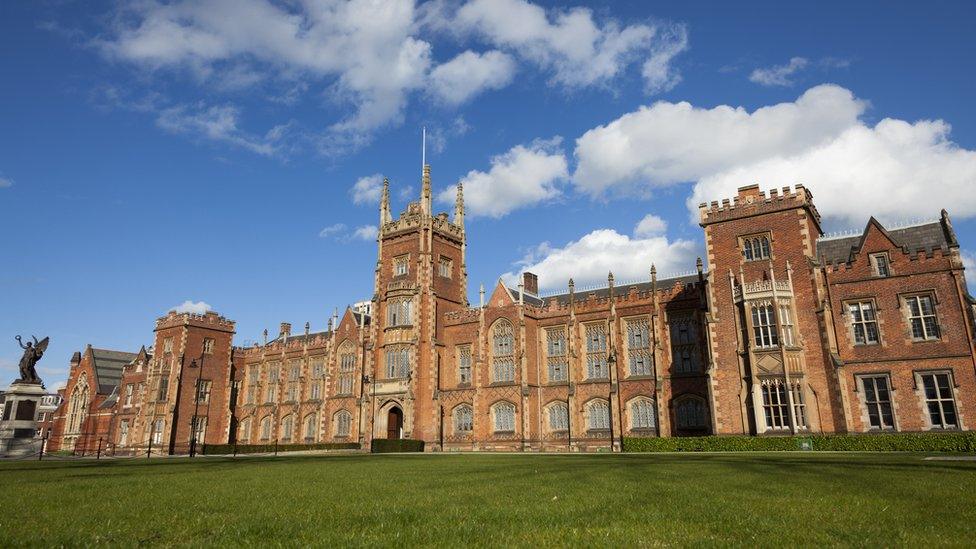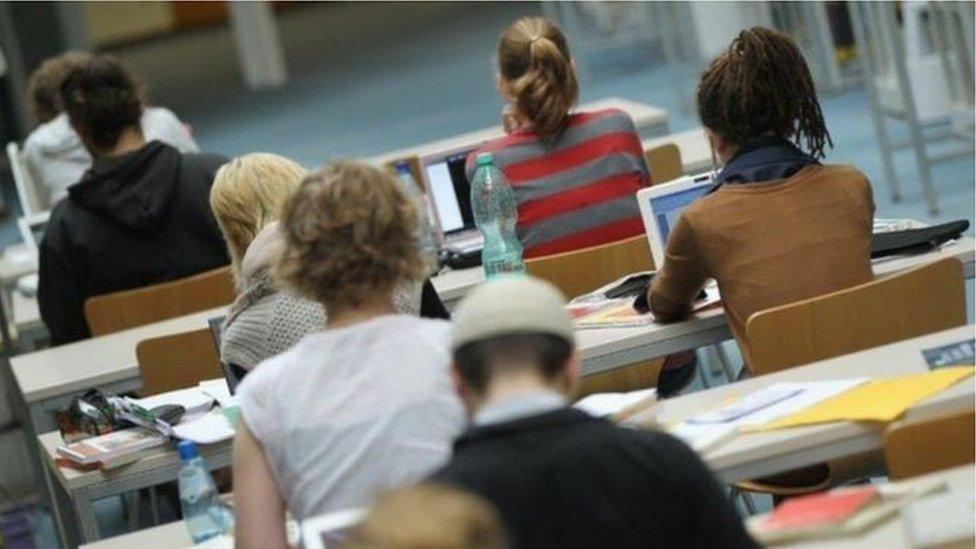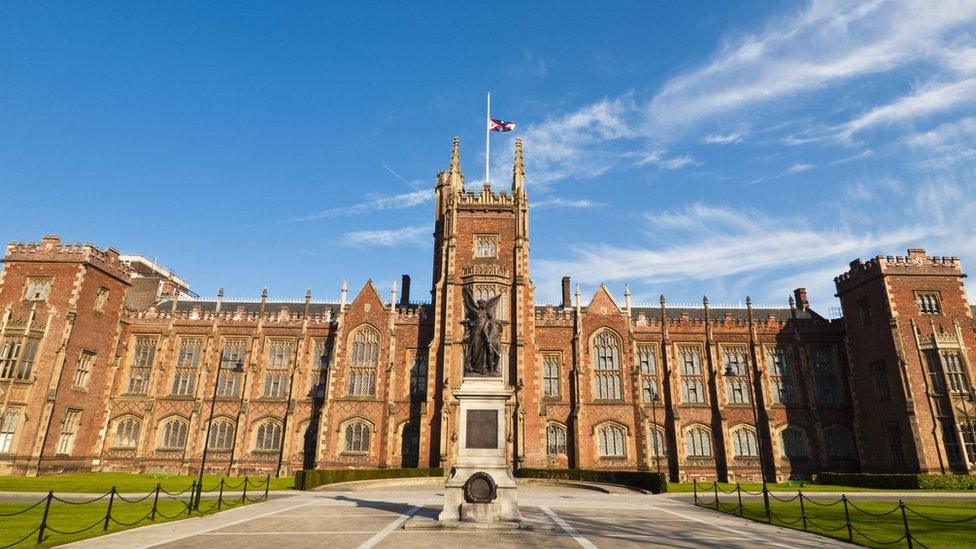NI universities: Applicant numbers 'likely to rise by 20% by 2030'
- Published

The number of undergraduate students from Northern Ireland at local universities is capped and depends on Stormont funding
There is likely to be a 20% rise in the number of school leavers from Northern Ireland seeking a university place by the end of the decade.
That is according to new forecasts from the Universities and Colleges Admissions Service (UCAS).
It predicted Northern Ireland will have a higher rise in demand for places until 2030 than Scotland or Wales.
But the Department for the Economy (DfE), which funds higher education, may face significant budget cuts.
That could lead to reductions in the number of places available for students at Northern Ireland's universities.
The number of undergraduate students from Northern Ireland at local universities is capped and depends on the amount of funding DfE makes available.
The DfE funding is the main reason why annual tuition fees for students in Northern Ireland are, at £4,630 in 2022-23, lower than fees in England and Wales.
'Journey to a million'
UCAS is the organisation which runs the application process to the UK's universities.
While there was a slight fall in the number of Northern Irish students starting university in 2022, admissions have reached record levels in recent years.
A higher proportion of 18 year olds from Northern Ireland go to university than any other part of the UK.

Queen's University Belfast has about 25,000 students, hailing from 96 countries, according to its 2021-22 annual report
UCAS said its own forecasting had shown that across the UK there could be 30% more applicants to higher education by 2030 than in 2022.
That would equate to about a million people applying to go to university by the end of the decade.
The organisation said there needed to be a UK-wide debate about the "challenges and opportunities" the "journey to a million" would create.
It warned that competition for university places would increase, for example, and places for relatively disadvantaged students could be at risk.
The projected growth is largely driven by an increase in the number of young people in the UK turning 18 until 2030.
There is also likely to be a continuing rise in the number of international students applying to study in the UK.
The number of international students at Queen's University Belfast (QUB), for instance, has grown significantly in recent years.
UCAS said there were already more Chinese students at UK universities overall, for example, than students from Wales or Northern Ireland.
The biggest growth in demand for university places until 2030 is likely to be in England, but UCAS is also forecasting increased demand in Northern Ireland.
'Economic handbrake'
There are expected to be about 14,500 18-year-old students from Northern Ireland entering higher education in 2030, according to the "most likely" scenario forecast by UCAS.
That is a rise of just over 20% from 11,900 in 2023.
The number of applicants to university from other age groups in Northern Ireland is also likely to rise, according to UCAS, but only slightly.
However, as places at Ulster University (UU) and QUB are capped by DfE, a rise in demand for places could see more Northern Ireland students going to universities in the rest of the UK.
Both QUB and UU have previously said they will need an extra 5,000 places for Northern Ireland undergraduates by 2030, due to the projected rise in the number of 18 and 19 year olds.
MPs on Westminster's Northern Ireland Affairs Committee recently said that cap on student numbers was acting as an "economic handbrake".
However, a recent Stormont strategy said that young people also needed to be made more aware of opportunities to study in further education or take qualifications like apprenticeships.
- Published3 March 2023

- Published16 December 2022

- Published22 September 2022
